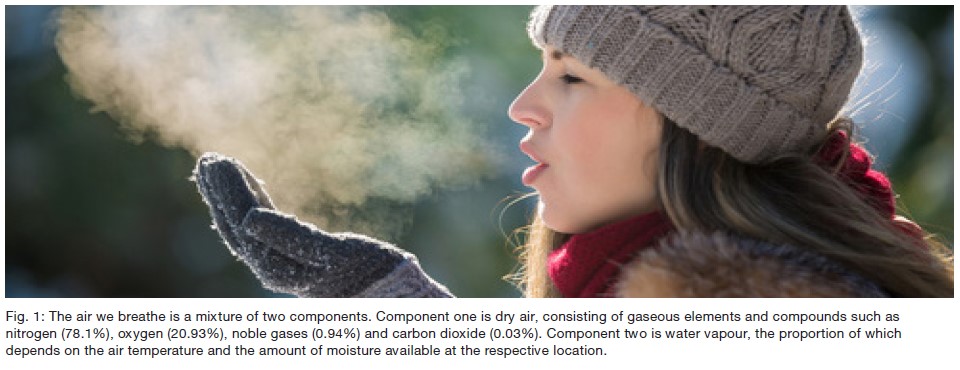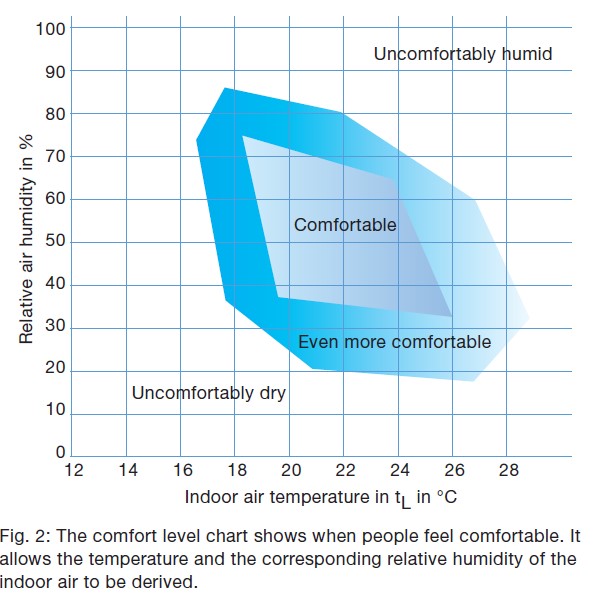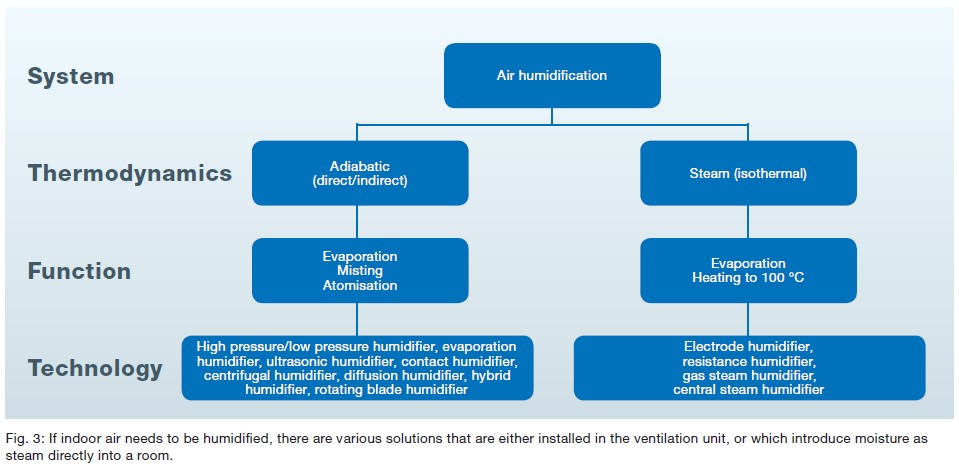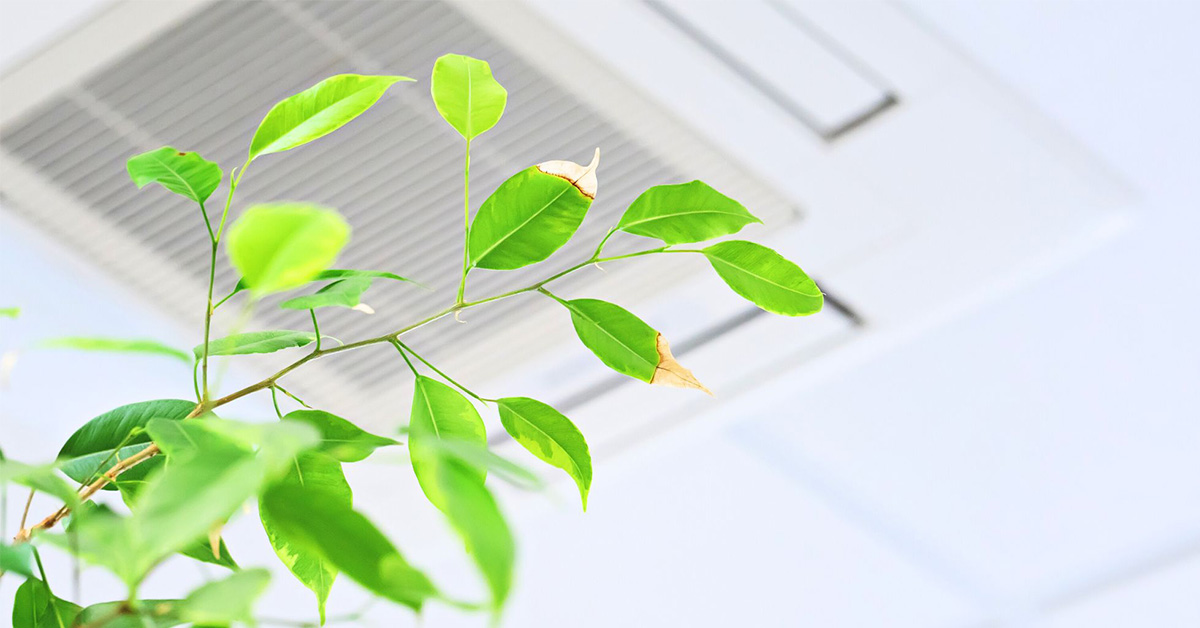
How important is indoor air humidity?
Indoor climate is comfortable when humidity and temperature are perceived by people as being pleasant. In modern houses, this is ensured by the ventilation of living space and in large buildings by ventilation systems, known as HVAC systems. Unfortunately, air conditioning too often ignores humidity and its influence on the indoor climate and level of comfort – often with serious health consequences. The situation is different in trade and industry.
If the product quality or manufacturing processes are crucially dependent on the indoor air humidity, the supply air is constantly monitored with sensors or humidity measuring devices. If the indoor air humidity is not right, it is adjusted via the ventilation system or a decentralised humidification solution. The same applies to the storage of moisture-sensitive goods, or to valuables and cultural artefacts in museums, archives and even vintage car garages. After all, production downtimes, mould, spores, cracks in old paintings or rusted classic cars mean financial losses.

Recommended indoor air humidity
The right air humidity plays at least as important a role in a good indoor climate as the right temperature. In fact, this applies all year round in the home, in offices or warehouses, in production facilities or in trade. Consequently, the ideal temperature range for comfort air conditioning is between 20 and 27 °C.
At the same time, the relative humidity of the indoor air should be between 30 and 65%.
By way of explanation: “Relative humidity” means the ratio of the actual water vapour content in the air to the maximum amount of vapour that can be absorbed at a given air temperature. For people, 40% is considered to be the minimum value. Relative humidity in rooms is perceived as particularly pleasant at 55%.
Room temperature & relative humidity go hand-in-hand

The connection between temperature and relative humidity is established by the so-called “humidex”. This index provides information about the temperature “felt” by people. For example:
At a room temperature of 26 °C and a relative humidity of 70%, people actually feel a temperature of 33 °C and find it very humid. However, if the relative humidity measured with a hygrometer or the new testo 400 universal IAQ instrument is only 40% at exactly the same
temperature, then the room feels like 28 °C.
That is almost comfortable. The perceived difference in this example is 5 °C. This is why the room temperature should not be cooled down unnecessarily in summer with an air conditioner or an HVAC unit if the indoor air humidity is not taken into account at the same time. This will just waste energy unnecessarily and not increase comfort levels. Incidentally, air conditioning experts agree that people indoors do not actually feel any temperatures at all. It is the combination of these temperatures with the indoor air humidity that they feel. Experts refer to this as the perceived enthalpy.
How does indoor air humidity become “right”?
What is already taken for granted in the manufacture and storage of products is also to be expected for people and their health in the future: In addition to room temperature, the right indoor air humidity will take on greater significance. But how does indoor air humidity become “right”? The answer is simple.
Residential ventilation systems already offer integrated moisture recovery. Moreover, large HVAC systems
can extract moisture from the exhaust air and return it to the supply air. In winter, this means that dry air becomes more humid. In summer, a cooling effect is produced by evaporating return moisture in the supply air flow. This type of solution is energy-efficient but must always be operated in a hygienically clean manner. If this moisture recovery is not sufficient, there are various options for humidifying the
air, as shown in Figure 3.

Regardless of whether the air is humidified adiabatically or with steam, energy is always invested in these cases – either electrically, or in the form of fossil fuels. This not only costs money, but also means additional CO₂ emissions. Therefore, if the available humidity is recovered first, then the additionally required air humidification systems are set correctly and on top of this, the relative humidity is cleverly combined with the room temperature. This not only creates a comfortable indoor climate, but also saves energy and money. For these reasons, it is definitely worth addressing the issue of indoor air humidity during the planning stage, and more intensively than has been the case to date.
Measurement of indoor air quality and comfort levels made easy with Testo IAQ measuring instruments.









 Reduce cooking oil costs while ensuring quality
Reduce cooking oil costs while ensuring quality Expert knowledge on CO2 monitoring
Expert knowledge on CO2 monitoring Refrigeration knowledge - in 3 modules
Refrigeration knowledge - in 3 modules



